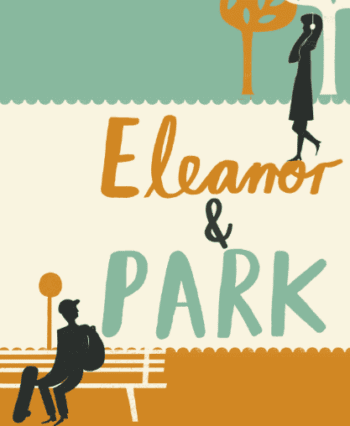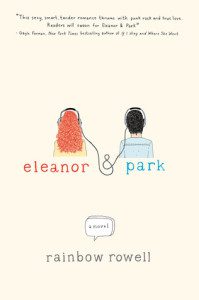
I read Rainbow Rowell’s YA novel Eleanor & Park because I’d heard great things about it, because I love unconventional love stories and because it has a cool cover. But the story ended up affecting me more than any work has in a long time—in a sneaky way and against my will, really. I knew beforehand that the book wouldn’t have a happy ending, but I didn’t expect my heart to break they way it did. I knew that the boy and the girl wouldn’t end up together. That’s the bottom line, but only a small part of the story.
The novel’s two main characters are both outsiders. Park is the only half-Asian kid in a small Omaha neighborhood in the ’80s and he’s into eyeliner and good music; Eleanor is chubby and poor and doesn’t dress or feel like other girls. They both feel alienated at home and at school, but they bond over Smiths mixes and comic books. Basically, they find each other in that subsuming way you only expect to when you’re sixteen.
It’s uncommon that writers make their characters go through pain for no simple reason and with no ultimate, worthwhile outcome. But this is exactly what Rowell does, quite beautifully. Neither character has a happy home life, but where Park’s is less-than-perfect in those small, private ways that you get over, Eleanor’s is just crushing. And I wonder why the author wrote about her characters that way, why she gave them each other just to, as Park says, take them away from each other. The reason I find the whole thing so tragic and lovely, though, is that Eleanor and Park are young but their story (although it’s written with words for teenagers) is grown-up. If Eleanor was in her late twenties I wouldn’t have cared. If it was, at heart, a kids’ story, Park wouldn’t have had the kinds of conflicting emotions about Eleanor that he does: He’s attracted to and embarrassed by her at the same time, and worries that his feelings prevent him from seeing her objectively like the other kids do. And he sometimes thinks about a prettier girl that he used to go out with, taking secret pleasure in the thought that she’s still not over him.
 Park is a real person, both clearer and with more depth than most male characters I read. I’ve known boys who have been eerily similar to him; I would have been him. Rowell understands the fluidity of attraction and identity and presents Park’s cleanly, unframed: his subversions of the high-school norm take feminine forms, he loves helping his mom in her beauty salon and he is, at times, blinded to Eleanor’s shame by his desire for her, imagining her body as “a stack of freckled heart shapes, a perfectly made Dairy Queen ice cream cone. Like Betty Boop drawn with a heavy hand.” (Eleanor, on the other hand, feels massive and consuming beside him, and is afraid of her constant desire to bite his face).
Park is a real person, both clearer and with more depth than most male characters I read. I’ve known boys who have been eerily similar to him; I would have been him. Rowell understands the fluidity of attraction and identity and presents Park’s cleanly, unframed: his subversions of the high-school norm take feminine forms, he loves helping his mom in her beauty salon and he is, at times, blinded to Eleanor’s shame by his desire for her, imagining her body as “a stack of freckled heart shapes, a perfectly made Dairy Queen ice cream cone. Like Betty Boop drawn with a heavy hand.” (Eleanor, on the other hand, feels massive and consuming beside him, and is afraid of her constant desire to bite his face).
I was born in 1986, the year that this story takes place, but like Eleanor I remember sitting on a boy’s carpet and feeling uncomfortable and excited and getting mixtapes and shaking for hours after kissing someone once; I didn’t register those things at the time, but as an adult I remember us then, and how we hadn’t been hurt before, so it is very beautiful and painful to read about that time in other peoples’ lives. I’m sure that my age and my nostalgia leave me with a different impression of the book than most of its target audience, but that’s part of the beauty of it for me.
Rainbow Rowell has mentioned that throughout the entire process of writing Eleanor & Park she’s had her mind on a possible sequel, maybe set years later. I very much hope that this happens because I’d love Eleanor to finally get a chance to bite Park’s face—and because as intense as it is to be in love when you’re young, it’s better when you’re older.




